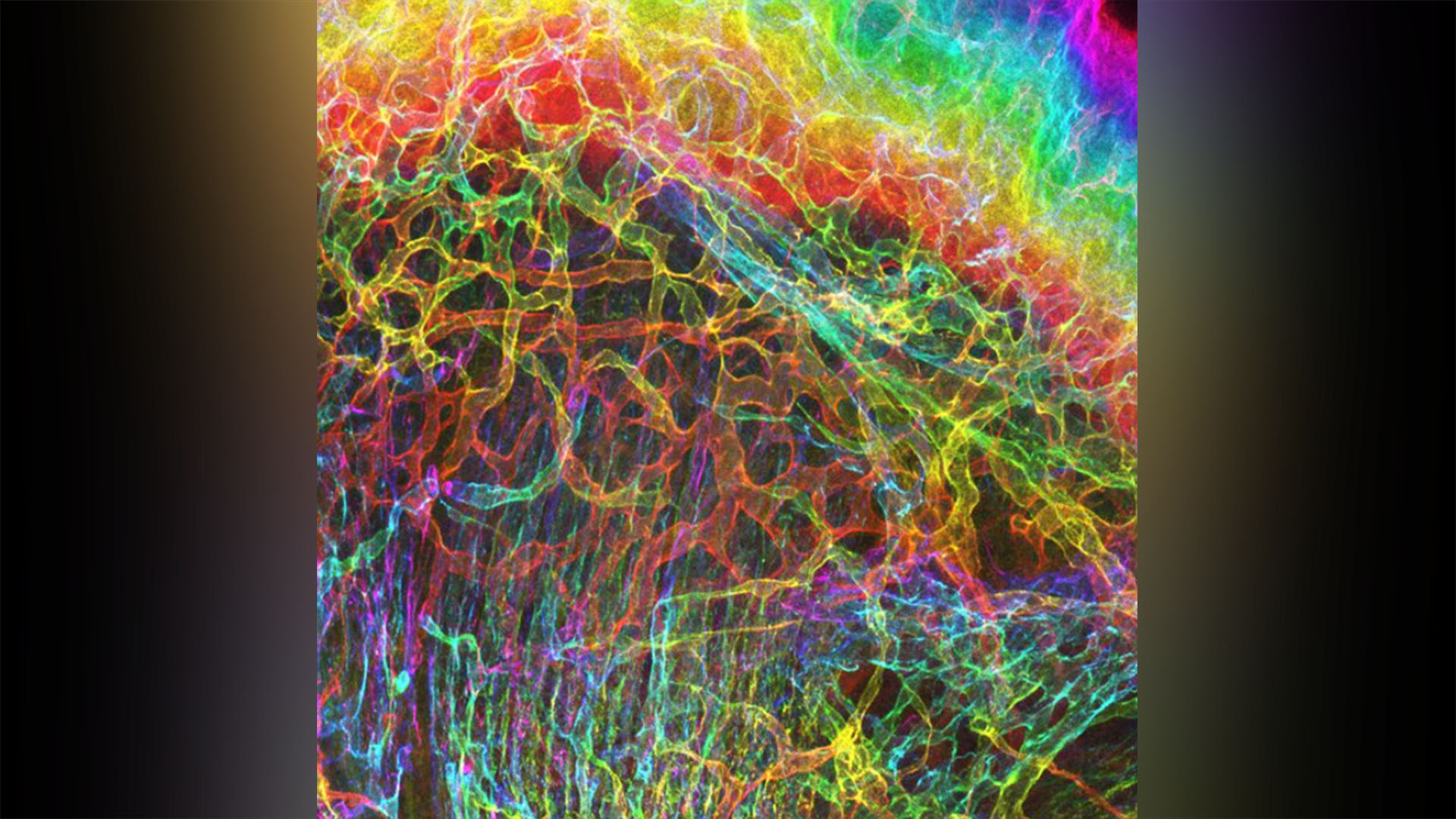Fascia, the connective tissue matrix that permeates the human body, exhibits a complex, crystalline nature that has significant implications for manual therapy and bodywork. This crystalline structure is integral to understanding the biomechanical and bioelectrical properties of fascia, especially its piezoelectric and vibrational attributes.

Credit: Sarah Lipp, Purdue University, and Sarah Calve, University of Colorado, Boulder
At the microscopic level, fascia is composed of a densely woven network of collagen fibers embedded in a ground substance. This arrangement imparts a semi-crystalline quality, allowing the fascia to behave like a dynamic, responsive fabric. Collagen, the primary protein in fascia, exhibits a triple helix structure, which contributes to the tissue’s tensile strength and elasticity. This structure is vital in maintaining the integrity and mechanical functionality of the fascial system, supporting the notion of tensegrity within the human body.
The piezoelectric property of fascia is particularly noteworthy. Piezoelectricity refers to the electrical charge that accumulates in certain materials in response to applied mechanical stress. In the context of fascia, when the tissue is mechanically deformed through stretching, compression, or other manual manipulations, it generates an electrical charge. This phenomenon is crucial for understanding how fascial manipulation can influence cellular communication and tissue repair. The generated electrical signals can affect cellular behavior, potentially impacting tissue healing and regeneration. Additionally, the electromagnetic attributes of the surroundings influence the electrical state of the fascial crystalline matrix.
Furthermore, fascia’s vibrational characteristics are essential in the context of manual therapy. The crystalline nature of fascial collagen fibers allows for the propagation of vibrational energy throughout the tissue. These vibrations can be influenced by external forces, such as manual manipulation or movement, and may play a role in cellular signaling and tissue function. Understanding these vibrational properties is key to appreciating how different manual therapy techniques, such as fascial manipulation, can affect the body at a cellular level.
In conclusion, the crystalline nature of fascia, coupled with its piezoelectric and vibrational properties, provides a foundational understanding of how fascial manipulation can influence the human body. These characteristics underscore the importance of considering biomechanical and bioelectrical factors in manual therapy, aligning with osteopathic principles and the concept of tensegrity in the human body.
